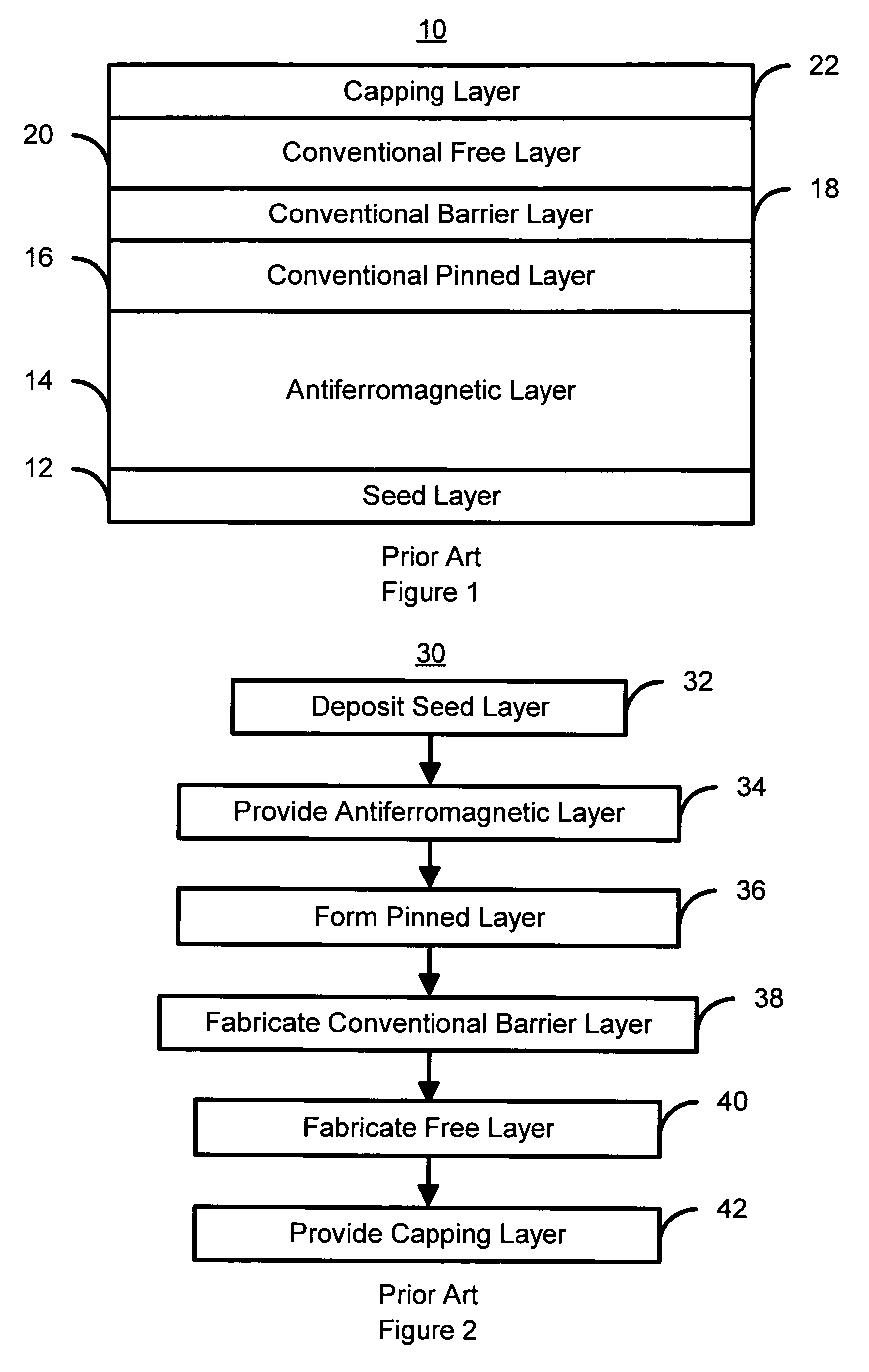Method for fabricating a spacer layer for a magnetoresistive element
a technology of magnetoresistive elements and spacer layers, applied in the field of magnetic recording technology, can solve the problems of poor signal from such tmr elements, too high for device applications, adversely affecting the insulating nature of conventional barrier layers, etc., and achieve the effect of reducing and repeating the magnetostriction
- Summary
- Abstract
- Description
- Claims
- Application Information
AI Technical Summary
Benefits of technology
Problems solved by technology
Method used
Image
Examples
Embodiment Construction
[0019]FIG. 4 depicts a high-level flow chart of a method 100 for fabricating a spacer layer magnetoresistive element, such as a TMR element, according to a preferred exemplary embodiment of the present invention. However, the method 100 might also be for manufacturing other magnetoresistive elements, including but not limited to current-perpendicular-to-plane (CPP) giant magnetoresistance (GMR) elements. The method 100 preferably commences after a portion of the magnetoresistive element has been fabricated. For example, for a structure having a bottom-pinned layer, the method 100 commences after the pinned layer has been fabricated but before the free layer has been provided. Alternatively, for a top pinned structure, the method 100 might start after the free layer has been provided but before the pinned layer has been fabricated.
[0020]A first metallic layer is provided, via step 102. A number of different metals might be used for step 102. For a TMR element, the metallic layer migh...
PUM
| Property | Measurement | Unit |
|---|---|---|
| thickness | aaaaa | aaaaa |
| thickness | aaaaa | aaaaa |
| thickness | aaaaa | aaaaa |
Abstract
Description
Claims
Application Information
 Login to View More
Login to View More - R&D
- Intellectual Property
- Life Sciences
- Materials
- Tech Scout
- Unparalleled Data Quality
- Higher Quality Content
- 60% Fewer Hallucinations
Browse by: Latest US Patents, China's latest patents, Technical Efficacy Thesaurus, Application Domain, Technology Topic, Popular Technical Reports.
© 2025 PatSnap. All rights reserved.Legal|Privacy policy|Modern Slavery Act Transparency Statement|Sitemap|About US| Contact US: help@patsnap.com



